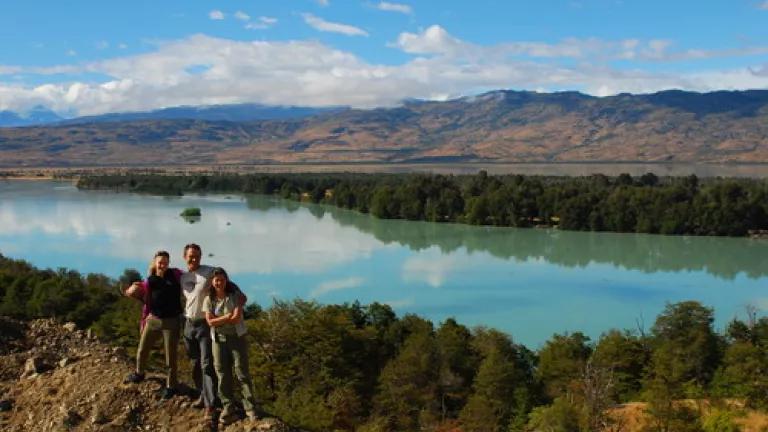
It would be hard to find a country with more abundant and accessible renewable energy resources--and a greater need to tap into them--than Chile. I spent nine days in this beautiful country last month, where NRDC is working with government and local citizens to encourage Chile to develop its clean energy resources.
With its high, sunny deserts, windy plains and seismic corridor, Chile has solar, wind, geothermal and other renewable energy resources that other countries can only dream about. Yet the country is trapped in the era of dinosaur energy, and is moving forward with plans for massive, destructive dams and dirty coal plants--even as local communities are already battling the effects of climate change and poor energy decisions in the past.
Global warming is a daily reality in Chile. Glaciers there are melting faster than anywhere else in the world, and that melting increases the risk of a natural phenomenon called a glacial lake outburst flood. These floods happen when a glacier that is damming a lake develops a hole, suddenly allowing the lake waters to pour through. We witnessed one of these events during our trip.
Our group was preparing to raft the next day on the Baker River, Chile's largest, when we heard the flood was in progress. The waters of Lake Cachet 2 were pouring through a hole in the Colonia glacier, causing the lake level to drop 87 meters (the height of New York City's Flatiron building) in a single day. The Baker River absorbed the flood, flowing at 3 times its normal rate.
The fork of the Baker River in the foreground is not really the river, but a result of the glacial lake outburst flood.
Needless to say, our planned rafting trip on the Baker was postponed. Instead we spent the day driving around the area to see how the flood had affected the surrounding land and the gaucho families who live there. Their properties were flooded as the river burst its banks and even sprouted entirely new branches. Thanks to a new monitoring system that has equipped each family with solar-powered CB radios, most were warned in time and managed to move their livestock to higher ground. We tried to visit one family, but a new river had come up between the road and the house. A few of us took off our shoes, rolled up our pants and waded over to greet them.

The people in this area are incredibly resilient--Lalo, the gaucho we visited, shrugged off with a smile the fact that the waters had washed away a small wooden bridge on his property and lodged it in a grove of trees. But glacial lake outburst floods are becoming alarmingly frequent in this area. There have been about seven since 2007, and none in the 40 years before that.

Lalo's livestock were unharmed, but his neighbor lost six sheep in the flooding.
The increasing frequency of glacial lake outburst floods raises serious questions about proposals to build massive hydroelectric dams in the region. NRDC has been helping local citizens battle one such project, called the HidroAysén project. It would build five dams on two of Patagonia's wildest rivers, and require the construction of a 1,200 mile long transmission line through the wilderness. In its environmental assessment, the company behind the project failed to consider many things, including how the dams might withstand more frequent and severe glacial lake outburst floods, which will, in all likelihood, become more common as the planet warms.
The tragedy of the HidroAysén project is that it's totally unnecessary. Efficiency measures alone could save Chileans more than 3,000 megawatts of power by 2020, more energy than HidroAysén project would produce. Chile's clean, renewable energy resources have the combined potential to generate nearly 400,000 megawatts of energy. Most of these technologies are already cost competitive with Chile's mainstays of large hydro and natural gas, yet they remain largely untapped. Chile's first geothermal plant, in the north, is under development and scheduled to come online in 2014--long before HidroAysén would start supplying power.
Recently, the government has taken important steps toward developing its first ever long-term energy policy, which will begin to make use of the country's own renewable energy assets. The Chilean Senate passed a bill that calls for the nation to use 20 percent renewable energy by 2020. This is, by all accounts, a very achievable goal--and one that will help preserve Chile's wilderness, reduce its dependence on imported coal, and provide reliable, cost-effective energy for its people. Despite this progress, Chile appears to pushing ahead with the harmful, unnecessary, HidroAysén mega-dam. Join us in encouraging Chile's president to stop the dam and keep Patagonia wild.